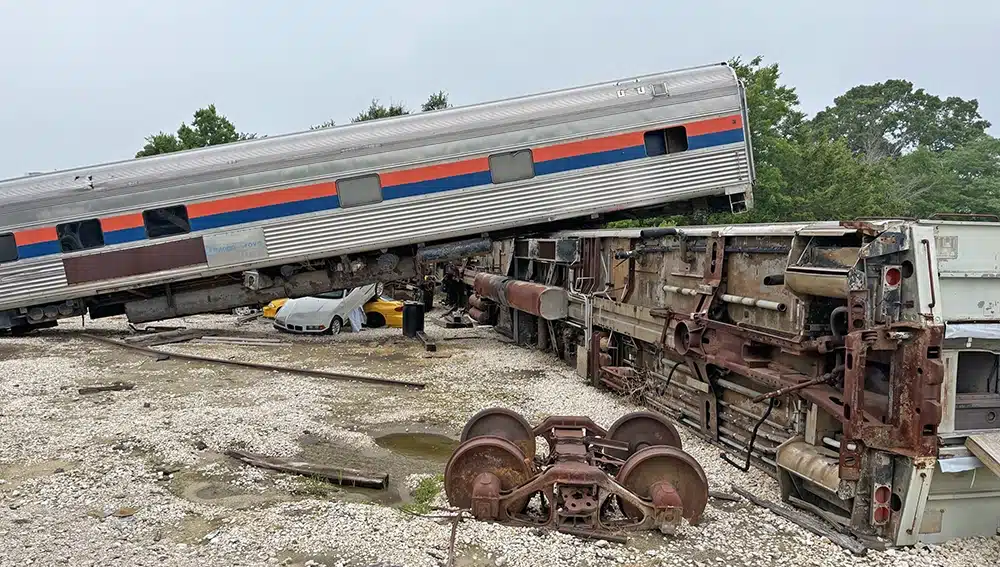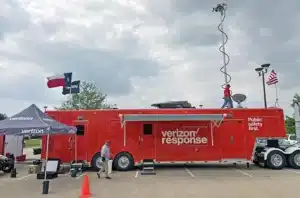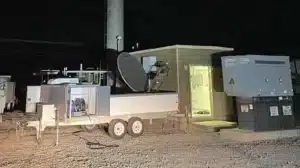Our world is becoming increasingly volatile. Whether it’s the geopolitical situation or through natural causes, cases of emergencies are rising and the ability to cope with them is of major concern to governments and agencies across the globe.
In 2023 alone, Pew Research Center noted that weather-related disasters caused a billion dollars-worth or more in damage. Therefore, states are dealing with increased spending as a result of disaster response and recovery efforts.
The National Oceanic and Atmospheric Administration (NOAA) is predicting an extremely active 2024 Atlantic hurricane season due to warmer ocean temperatures, the changing weather pattern from El Niño to a La Niña, stronger jet stream and changes in atmospheric pressure. It notes that: “Climate change, including increased heat, extended drought, and a thirsty atmosphere, has been a key driver in increasing the risk and extent of wildfires in the western United States during the last two decades.”
Whether natural or manmade disaster, it is important to be prepared for any sort of emergency.
 INTEROP 2024: Preparation is Key
INTEROP 2024: Preparation is Key
First responders, state, federal agencies and emergency response communications providers from all over the United States converged on the Texas A&M University for INTEROP 2024 last week. This disaster response exercise, which has run bi-annually for over a decade, simulates a disaster scenario so that attendees can assess information sharing capabilities between federal, state, local, government departments and agencies. It also demonstrates the ability of participating agencies to establish interoperable communications in a disaster event and enables them to identify connectivity requirements for an incident command system. It’s an invaluable exercise in enabling agencies and private enterprise to collaborate effectively in the event that a real disaster occurs.
The Scenario: Disaster City
This year, the exercise simulated a large-scale, nationally significant sporting event – think Super Bowl or major college game – with over 100,000 people in attendance as well as federal assets such as the FBI. The event began with an initial cyber-attack such as the halting of a train near to the stadium, blocking intersections, followed by a terrorist event such as bombing of a local train station and the stadium itself along with a HazMat spill. Perpetrators and drones are witnessed fleeing the area.
Verizon and ST Engineering iDirect Continue Longstanding Partnership
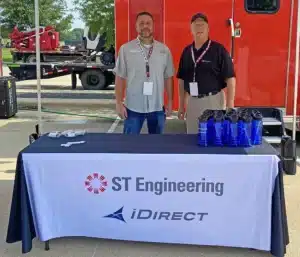
Verizon is deep into its preparations for the 2024 hurricane season and INTEROP gave the team the ideal setting to test its capabilities.
Verizon leverages the Dialog® platform for cellular backhaul, emergency services and disaster recovery as well as the iDirect Evolution® platform for business continuity. ST Engineering iDirect has participated in these simulated catastrophic event scenarios over the years with Verizon, for example, at Operation Convergent Response (OCR), a public safety technology expo and live demonstration event, and at the Central States Communications Exercise to support the Verizon Frontline Response Team.
An important element of preparedness is ensuring that a Primary – Alternate – Contingency – Emergency (PACE) plan is in place, and great emphasis was placed upon this during INTEROP. When terrestrial networks are unavailable, satellite communications are quick to deploy and are reliable. PACE increases the availability of the links and can be applied on both gateway side, via geo-redundancy as well as on the remote side via network diversity switching to other satellites, transponders or constellations.
A familiar fixture at INTEROP is Verizon’s “Big Red” Tactical Command Center and Cell-on-Wheels. Both are powered by ST Engineering iDirect’s high performance MDM5010 satellite modem and played a valuable role during the “Disaster City” scenarios. One demonstration showcased a tethered drone for an eFemto 4G/LTE site which was connected to an iDirect MDM5010 terminal on the ground which transmitted the feed over the satellite to a first responder control center.
The event also featured several panel sessions, one of which Darren also participated. Called “The Future of Interoperability”, Darren talked about his experiences of supporting Verizon’s disaster deployments over the decades in response to hurricanes and wildfires. He explained how our dedicated bandwidth solution, delivered via Verizon, offers Quality of Service and reliability in times of disaster deployment and the power of this type of solution in comparison with alternative consumer-grade satellite solutions.
Underlining the importance of satellite technology in disaster response, whilst the event was taking place, two Verizon STEER (Satellite Trailer Emitting Equipment Remote) trailers, powered by Dialog modems, were deployed to Oklahoma and Arkansas to restore the cell network after tornados hit both states. Testimony to the power of satellite!
To find out more read Verizon’s press release, Verizon Frontline Delivers Critical Connectivity Solutions During INTEROP 2024.
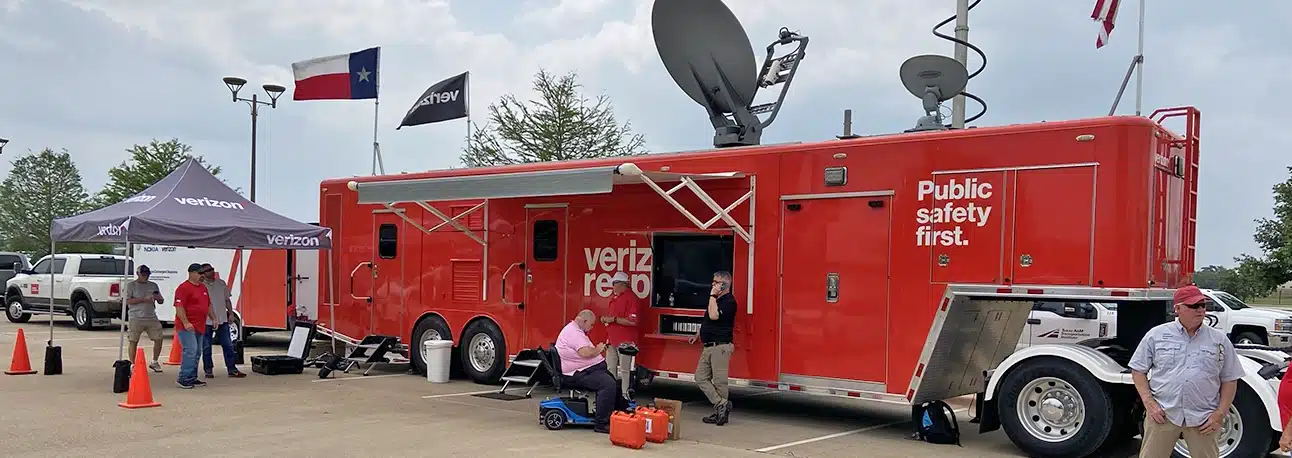
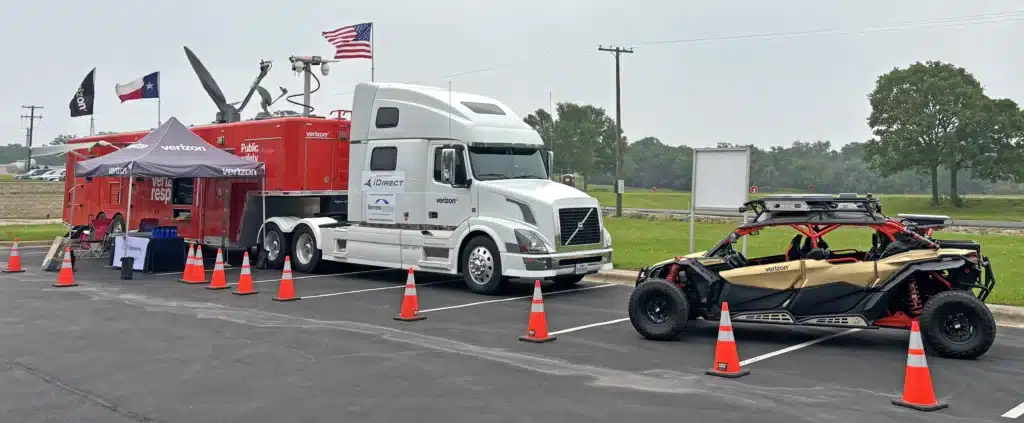
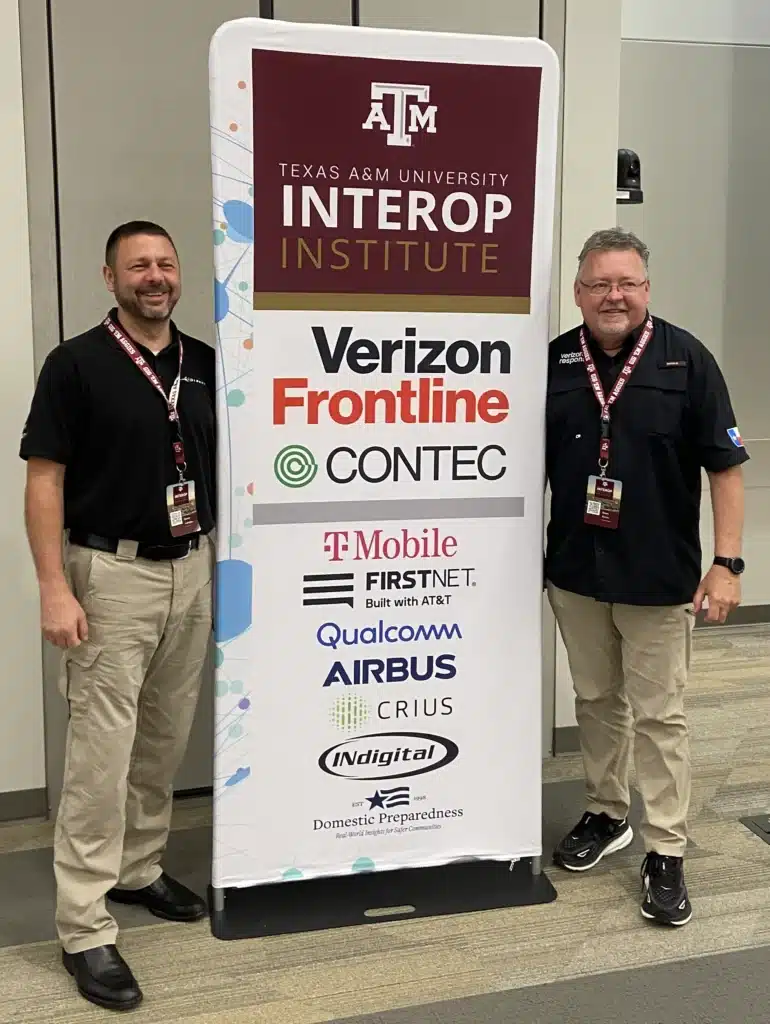 INTEROP 2024: Preparation is Key
INTEROP 2024: Preparation is Key